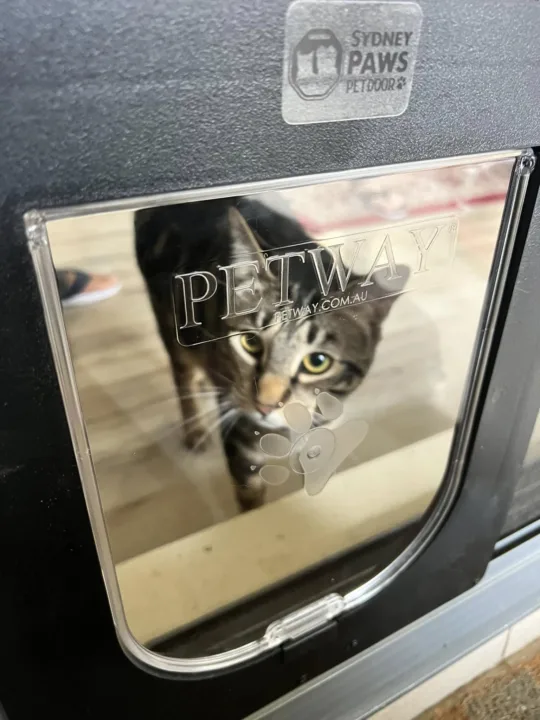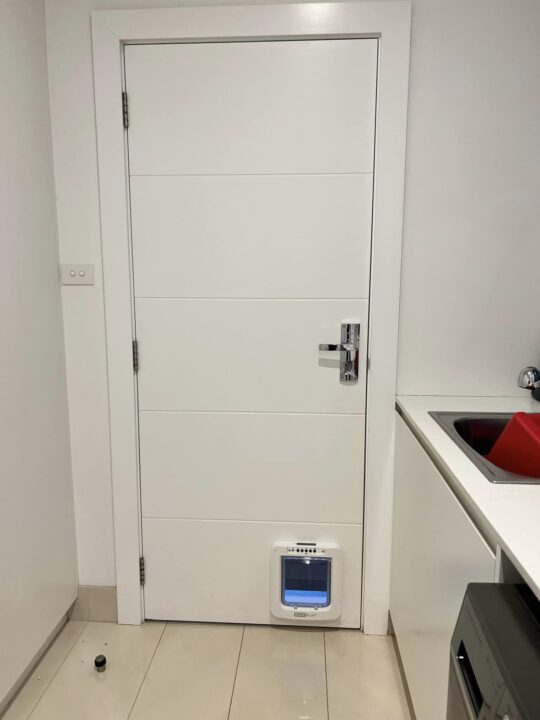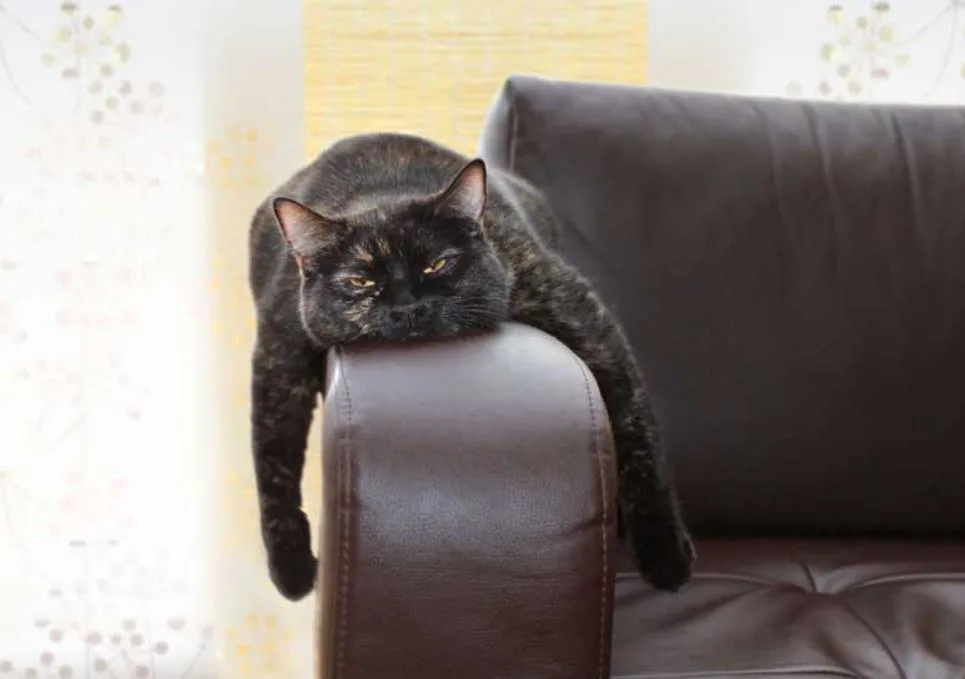Cats, those enigmatic, purring masters of comfort, often seem perfectly content draped over a sunbeam or curled up on your favourite blanket. For many cat owners, the choice to keep their feline friends exclusively indoors is rooted in love and concern for their safety, protecting them from traffic, fights, and illnesses. However, a common misconception is that an indoor-only life is always a completely fulfilling one for every cat.
The truth is, while the comforts of home are undeniable, a purely indoor existence can sometimes lead to an unseen enemy for our whiskered companions: boredom. Cats, much like their wild ancestors, possess deep-seated instincts for hunting, exploring, and engaging with a dynamic environment. When these natural urges aren’t adequately met, even the most pampered housecat can start to show signs of stress, frustration, and, yes, profound boredom.
So, how can you tell if your beloved indoor cat is craving more stimulation and freedom? And if they are, what can you do to provide it safely? This comprehensive guide will explore the subtle and not-so-subtle indicators that your cat might be bored, delve into why providing controlled outdoor access is often the ultimate solution, and show how tools like microchip cat doors can transform your cat’s life while maintaining your peace of mind.
The Feline Instinct: Why “Just Indoors” Isn’t Always Enough
To understand feline boredom, we must first appreciate the inherent nature of a cat. Despite generations of domestication, every cat retains the instincts of a skilled predator and an inquisitive explorer. They are wired for:
- Hunting: The thrill of the chase, the stalk, the pounce – even if it’s just a toy mouse. Their brains are designed to problem-solve and strategise during a hunt.
- Exploration: Cats are territorial and curious. They love to patrol, investigate new smells, climb to high vantage points, and discover hidden nooks.
- Sensory Input: The subtle shifts in light, the rustle of leaves, the scent of fresh air, the feeling of different textures under their paws – these sensory experiences are vital for mental stimulation.
- Choice and Control: Cats appreciate autonomy. The ability to choose where they go, when they eat, or when they interact can significantly impact their sense of well-being.
When these fundamental instincts are confined to the unchanging landscape of an indoor home, a cat’s sophisticated brain can become under-stimulated. This chronic lack of appropriate outlets for natural behaviours is the root cause of boredom, which can quickly spiral into stress and behavioural problems.
Signs Your Cat Might Be Bored (and Craving More Freedom)
Observing your cat’s behaviour is key. Many signs of boredom are often misinterpreted as “naughtiness” or just “being a cat.” However, they are frequently a cry for more enrichment and an indication that your cat needs a greater sense of purpose or control over their environment.
Here are the key indicators to watch for:
- Excessive Vocalisation: The “I’m Bored” Meow Is your cat meowing incessantly, often without an obvious reason, or crying at closed doors, especially exterior ones? This isn’t always about hunger or needing attention; it can be a clear sign they’re feeling restless or frustrated. They might be trying to communicate their desire to explore, or simply expressing pent-up energy that needs an outlet. A persistent, uncharacteristic vocalisation is a red flag.
- Destructive Behaviours: Chewing, Scratching, and Shredding If your furniture, curtains, or carpets are suddenly targets for scratching, chewing, or shredding, boredom could be the culprit. Cats scratch to stretch, mark territory, and sharpen claws, but excessive or inappropriate scratching often points to anxiety or a lack of stimulating alternatives. Chewing on household items can be a way for them to release frustration or seek sensory input they’re missing. Destructive behaviour, especially around exits like doors, can also be a desperate attempt to escape confinement.
- Over-Grooming or Repetitive Behaviours When cats are stressed or bored, they can develop obsessive behaviours to self-soothe. This often manifests as excessive grooming, leading to bald patches or skin irritation. Other repetitive behaviours might include pacing, tail chasing, or even staring blankly at walls for prolonged periods. These are coping mechanisms for an under-stimulated mind.
- Changes in Eating Habits: Overeating or Loss of Appetite Boredom can lead to emotional eating, causing your cat to gain weight as they seek comfort or stimulation from food. Conversely, some cats may lose their appetite due to stress or depression stemming from a lack of environmental enrichment. Both extremes warrant investigation.
- Litter Box Issues: Beyond the Bladder If a previously well-trained cat suddenly starts having “accidents” outside the litter box, and a vet has ruled out medical issues, it’s often a behavioural cry for help. Stress, anxiety, or boredom can lead a cat to eliminate in inappropriate places as a way to mark territory, express frustration, or simply because they’re unhappy with their current environment.
- Aggression Towards Other Pets or Humans A bored or frustrated cat may redirect their pent-up energy and predatory instincts inappropriately. This can manifest as increased aggression towards housemates (other cats, dogs) or even towards you. This isn’t maliciousness; it’s often a cat’s desperate attempt to stimulate themselves or assert control when they feel their environment isn’t providing enough outlets.
- Excessive Sleeping or Lethargy While cats sleep a lot, an unusual increase in sleeping, coupled with a general lack of interest in toys or interactions, can be a sign of depression or profound boredom. A truly content cat will have periods of active play and engagement, even if they spend many hours napping.
- Attention-Seeking Behaviour: The Constant Follower Does your cat follow you from room to room, constantly weaving around your legs, or pawing at you for attention? While some clinginess is normal, excessive attention-seeking can indicate a cat that is under-stimulated and reliant on you to provide all their entertainment. They might be trying to initiate play, or simply don’t know what to do with themselves when you’re not actively engaging with them.
- Lack of Curiosity or Engagement A healthy, well-adjusted cat is curious. They’ll investigate new objects, explore changes in their environment, and engage with toys or activities. If your cat seems apathetic, shows little interest in play, or ignores environmental changes, it could be a sign they’ve resigned themselves to a monotonous existence.
The Link Between Boredom and Stress in Cats
It’s crucial to understand that chronic boredom isn’t just a minor inconvenience for your cat; it’s a significant stressor. Just like humans, prolonged periods of under-stimulation can lead to anxiety, frustration, and even depression in felines. This stress can manifest not only in behavioural problems but also in physical health issues, including a weakened immune system or stress-related urinary problems. Addressing boredom is therefore a key component of preventative health care for your cat.
Enriching the Indoor Environment (and its limits)
Before considering outdoor access, it’s essential to ensure your indoor environment is as stimulating as possible. This includes:
- Vertical Space: Cat trees, shelves, and window perches provide climbing opportunities and vantage points, satisfying a cat’s natural desire to observe from above.
- Interactive Toys: Regular playtime with wand toys, laser pointers (with a catch!), and puzzle feeders can tap into their predatory instincts.
- Puzzle Feeders: These make mealtime a mental challenge, slowing down eating and providing intellectual engagement.
- Scratching Posts & Pads: Offering various textures and orientations (vertical, horizontal) can encourage appropriate scratching behaviour.
- Rotational Toys: Keep toys fresh by rotating them, so your cat doesn’t get bored with the same selection.
- Window Watching: Give them access to windows with interesting views (but ensure screens are secure).
While these methods are vital for indoor cat enrichment, for some cats, they are simply not enough. The confined, unchanging nature of an indoor space, no matter how well-equipped, cannot fully replicate the dynamic, sensory-rich environment of the outdoors. For cats with a strong drive to explore, hunt, or simply experience the world beyond four walls, the ultimate solution often involves safe, controlled outdoor access.
The Freedom Solution: Controlled Outdoor Access
This is where the debate often arises: indoor vs. outdoor. However, there’s a smart middle ground: controlled outdoor access. This isn’t about letting your cat roam freely and unsupervised in potentially dangerous areas. It’s about giving them the choice and opportunity to experience the enriching sights, sounds, and smells of the outdoors in a secure environment.
The benefits of controlled outdoor access for a bored cat are immense:
Sensory Overload (in a good way): New smells, the feel of real grass, the sound of birds, the warmth of the sun – these stimulate all of a cat’s senses in ways an indoor environment cannot.
Natural Instinct Fulfilment: Even a small, secure outdoor area provides opportunities for “hunting” insects, climbing, or patrolling a real territory.
Physical Exercise: More space means more running, stretching, and climbing, helping to keep them fit and prevent obesity.

Reduced Stress & Boredom: The ability to choose when to go out and when to come in empowers your cat, significantly reducing feelings of confinement and frustration.
Improved Behaviour: With an outlet for their energy and instincts, many boredom-induced behaviours like scratching, vocalising, or aggression naturally diminish.
How Cat Doors Facilitate This Freedom
The cornerstone of safe, controlled outdoor access is a properly installed cat door. Gone are the days of flimsy, insecure flaps. Modern cat doors are sophisticated tools designed to give your pet independence while giving you peace of mind.
They eliminate the need for you to constantly play “doorman”, allowing your cat to:
- Go out for a potty break whenever nature calls, reducing the chance of accidents.
- Enjoy a sunbath on the balcony or a sniff around the garden without waiting for you.
- Retreat indoors quickly if they feel startled or unsafe outside.
- Self-regulate their environment, choosing when they need a change of scenery or a quiet outdoor moment.
The Gold Standard: Microchip Cat Doors
For ultimate control and security, especially in multi-pet homes or areas where stray animals are a concern, microchip cat doors are the premier solution. These ingenious devices work by scanning your cat’s unique microchip (the same one used for identification).
Here’s why they are the ideal choice for controlled outdoor access:

Exclusive Access: Only your microchipped cat (or cats) can enter, preventing unwelcome visitors like stray cats, possums, or even small dogs from coming into your home. This is crucial for safety and hygiene.
No Collars Needed: Since they read your cat’s existing microchip, there’s no need for uncomfortable collars, tags, or magnets, which can sometimes get lost or snagged.
Programmable Features: Many microchip cat doors offer advanced features, such as:
Curfew Mode: Programme the door to lock at night and unlock in the morning, ensuring your cat is safely indoors during higher-risk hours.
In-Only/Out-Only Mode: Allow your cat to come in but not go out, or vice-versa, for specific situations (e.g., vet visits, medication).
Multiple Cat Recognition: For households with multiple cats, you can program the door to recognise all your pets, even setting individual permissions for each cat.
Activity Tracking: Some advanced models can even track your cat’s comings and goings, providing insights into their outdoor habits.
Enhanced Security: Beyond controlling which animals enter, microchip cat doors integrate robust locking mechanisms and durable construction, adding an extra layer of security to your home.
Weather Sealing: Designed to be weatherproof, they help maintain your home’s insulation and protect against drafts.
Choosing the Right Cat Door and Creating a Safe Outdoor Space
Sydney Paws Petdoor specialises in installing cat doors across a variety of surfaces, ensuring a seamless and secure fit for your home:
- Cat Doors for Glass Sliding Doors: Ideal for accessing balconies, courtyards, or backyards through existing glass sliding doors. This is a popular option for apartments and modern homes.
- Cat Doors for Timber Doors: A discreet and secure option for traditional wooden doors.
- Cat Doors for Walls: For direct access through a wall, suitable for specific home layouts.
- Window-Mounted Pet Doors: A perfect solution for cat owners in tighter inner-city flats, especially when paired with a secured balcony or catio setup.
- Patio Panel Pet Doors: An excellent non-permanent, strata-friendly solution for renters, these inserts slide into existing glass sliding door tracks without requiring any modifications.
Crucially, installing a cat door goes hand-in-hand with creating a safe outdoor space. Whether it’s:
- A securely netted balcony in an apartment, providing elevated views and fresh air without escape risks.
- A “catio” (enclosed cat patio) for a fully protected outdoor experience.
- A fenced backyard where the cat door provides direct access to a secure perimeter.
Our team can provide advice on placement and integrate the cat door seamlessly with your existing secure outdoor setup.
Training Your Cat to Use a Cat Door
While some cats are naturally curious and take to a cat door quickly, others may need a little encouragement. Rest assured, every cat door installation by Sydney Paws Petdoor includes access to our expert cat door training program. We provide guidance and tips to help your feline friend confidently build independence and embrace their new freedom, making the transition stress-free for both of you.
Final Thoughts: A Happier, More Balanced Cat
Recognising the signs of boredom in your indoor cat is the first step towards a more enriched life for them. While indoor enrichment is vital, for many cats, true contentment comes from the ability to safely access the stimulating world beyond their four walls.
A microchip cat door, expertly installed by Sydney Paws Petdoor, offers the perfect balance: it fulfils your cat’s innate desires for exploration and autonomy while providing you with unparalleled security and peace of mind. It allows your cat to self-regulate, burn energy, and engage their senses, leading to a significant reduction in stress and boredom-related behaviours.
Investing in a cat door isn’t just about convenience; it’s about investing in your cat’s emotional and physical well-being. It’s about giving them the freedom to thrive, to express their natural instincts, and to live a more balanced, joyful life.
Ready to enhance your cat’s independence and bring more harmony to your home?
Contact Sydney Paws Petdoor today to explore our range of cat doors, including the latest microchip models, and discover how our professional installation and training support can transform your cat’s life.
Cat Doors for Bored Cats – Frequently Asked Questions
Do all indoor cats get bored?
Not all, but many do. Cats are naturally curious and predatory, and if their indoor environment doesn’t offer enough stimulation for their instincts, they can easily become bored. Signs include excessive vocalisation, destructive behaviour, over-grooming, and changes in appetite.
Can a cat door really improve my cat’s behaviour?
Yes, a cat door can significantly improve a cat’s behaviour by reducing feelings of confinement and allowing them to fulfil natural instincts. This autonomy can lead to reduced stress, less destructive behaviour, fewer litter box issues, and a calmer, more confident cat overall.
What makes microchip cat doors safer than regular cat flaps?
Microchip cat doors only grant access to your cat’s unique microchip, preventing stray animals or wildlife from entering your home. This enhances security, prevents fights with other animals, and ensures unwanted guests don’t bring in diseases or pests. They also don’t require collars, which can pose a safety risk.
Can cat doors be installed in apartments?
Absolutely. For renters, patio panel cat doors are an ideal non-permanent solution that fits into existing sliding door tracks without modifications. For apartment owners with strata approval, we can install a sliding door pet door directly into glass sliding doors or windows, providing access to secure balconies or catios.
How do I train my cat to use a new cat door?
Sydney Paws Petdoor provides expert cat door training support with every installation. We offer guidance on how to gently encourage your cat to use their new door, ensuring they feel confident and comfortable with their newfound freedom.


